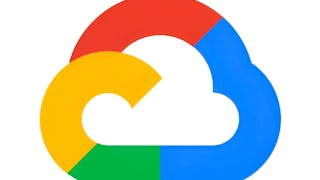Les développeurs d'applications et les professionnels DevOps doivent s'assurer que leur application fonctionne au mieux. Cependant, ces applications peuvent avoir besoin d'aide en cas de bogues, de lenteur ou de performances médiocres. La surveillance des applications consiste à identifier, mesurer et évaluer l'efficacité d'une application. D'autre part, l'observabilité fait référence à la manière dont une application peut être surveillée grâce aux données obtenues lors de la surveillance. La surveillance et l'observabilité sont toutes deux nécessaires pour obtenir des informations sur le système et garantir son bon fonctionnement. Ce cours présente de manière approfondie la surveillance et l'observabilité, en couvrant les concepts fondamentaux et les outils populaires tels que Prometheus, Grafana, Mezmo (LogDNA) et Instana. Vous apprendrez également les trois piliers de l'observabilité et du traçage pour les applications de conteneurs et acquerrez une expérience pratique avec le cadre OpenTelemetry. Tout au long du cours, vous effectuerez des travaux pratiques interactifs pour appliquer vos connaissances et acquérir de l'expérience avec les outils et les techniques utilisés par les professionnels du logiciel et du DevOps. À la fin de ce cours, vous serez en mesure de démontrer vos connaissances en matière de surveillance et d'observabilité, et vous acquerrez la confiance nécessaire pour effectuer ces tâches dans un cadre pratique.



Surveillance et observabilité pour le développement et DevOps
Ce cours fait partie de plusieurs programmes.
Enseigné en Français (doublage IA)


Instructeurs : John Rofrano
Enseignant de premier plan
13 397 déjà inscrits
Inclus avec 
(89 avis)
Expérience recommandée
Ce que vous apprendrez
Expliquez l'importance du contrôle et décrivez des concepts tels que les signaux d'or
Démontrez votre connaissance de l'observabilité avec Instana et expliquez les piliers de l'observabilité, l'observabilité native dans le nuage et les types d'échantillonnage
Mettre en œuvre la journalisation et démontrer votre connaissance de la télémétrie à l'aide d'OpenTelemetry et du traçage à l'aide de Kubernetes
Développez une expérience pratique avec une variété d'outils tels que Prometheus, Grafana, Mezmo (LogDNA), OpenTelemetry et Instana
Compétences que vous acquerrez
- Catégorie : Visualisation interactive des données
- Catégorie : Moniteur du système
- Catégorie : Gestion des performances des applications
- Catégorie : Docker (Logiciel)
- Catégorie : Kubernetes
- Catégorie : Prométhée (Logiciel)
- Catégorie : Grafana
- Catégorie : DevOps
- Catégorie : Microservices
- Catégorie : Données en temps réel
- Catégorie : Contrôle continu
Détails à connaître

Ajouter à votre profil LinkedIn
15 devoirs
Découvrez comment les employés des entreprises prestigieuses maîtrisent des compétences recherchées

Élaborez votre expertise du sujet
- Apprenez de nouveaux concepts auprès d'experts du secteur
- Acquérez une compréhension de base d'un sujet ou d'un outil
- Développez des compétences professionnelles avec des projets pratiques
- Obtenez un certificat professionnel partageable auprès de IBM

Il y a 5 modules dans ce cours
Cette semaine, vous découvrirez la surveillance des applications, les termes courants utilisés dans ce domaine et l'importance de la surveillance pour les développeurs. Vous découvrirez également les types de surveillance qui vous donnent une visibilité sur les performances des applications et sur les systèmes informatiques connectés. Vous vous familiariserez avec les quatre signaux d'or de la surveillance et apprendrez à les utiliser pour améliorer vos systèmes de surveillance. Ensuite, vous explorerez les différences entre les processus de suivi et d'évaluation. Vous apprendrez que le suivi est un processus routinier et continu, tandis que l'évaluation est un processus à long terme. Vous en apprendrez davantage sur les composantes du suivi, notamment les mesures, l'observabilité et les alertes. Vous découvrirez également l'importance du suivi des métriques relatives aux hôtes, aux applications, au réseau et à la connectivité, ainsi qu'au parc de serveurs. Enfin, vous découvrirez la nécessité et l'importance de la surveillance des applications.
Inclus
8 vidéos2 lectures3 devoirs1 plugin
Cette semaine, vous découvrirez la surveillance synthétique et son importance. Vous explorerez également les outils de surveillance synthétique, leurs utilisations et leurs caractéristiques. Vous comprendrez comment la surveillance des applications permet aux développeurs d'observer les applications et comment la surveillance peut fournir des informations précieuses sur les performances des applications. Vous découvrirez Prometheus et les avantages de l'utilisation d'un outil d'analyse. Vous découvrirez également Grafana, qui est généralement utilisé avec Prometheus. Vous explorerez comment un outil de visualisation, comme Grafana, peut organiser toutes vos données de surveillance. En outre, vous découvrirez comment le bon outil de visualisation peut aider votre organisation et que la visualisation comprend de nombreuses options, telles que des diagrammes, des graphiques et des lignes de temps. Enfin, vous découvrirez les alertes, la partie réactive d'un système de surveillance, et vous apprendrez à connaître les alertes de métrique, de journal, de journal d'activité et de détection intelligente.
Inclus
8 vidéos2 lectures3 devoirs2 éléments d'application2 plugins
Dans ce module, vous explorerez le concept de journalisation des applications et son importance. Vous découvrirez les avantages de l'utilisation d'outils de surveillance des journaux et leurs caractéristiques. De plus, vous serez initié aux techniques de journalisation et de traçage distribuées. Vous apprendrez également les concepts clés du traçage distribué et les étapes de la mise en œuvre de la journalisation distribuée. Vous explorerez comment mettre en œuvre la journalisation et les différents types de journaux. Vous aurez un aperçu du formatage, de l'analyse et de la conservation des journaux. En outre, vous identifierez les principales raisons de stocker les données de journalisation. Vous explorerez les dimensions analytiques qui suggèrent la durée de la période de conservation des données de journalisation. Vous découvrirez également quelques bonnes pratiques pour le stockage des journaux. En outre, vous explorerez Mezmo, ses cas d'utilisation et ses fonctionnalités. Enfin, vous serez initié au travail avec Mezmo et aux méthodes d'ingestion des données de logs sur la plateforme Mezmo.
Inclus
6 vidéos3 lectures4 devoirs3 plugins
Dans ce module, vous apprendrez ce qu'est l'observabilité, ses avantages et les trois piliers de l'observabilité. Vous explorerez le concept d'observabilité native dans le nuage, ses outils et les piliers de l'observabilité d'entreprise dans le nuage. En outre, vous serez initié au concept d'échantillonnage dans la journalisation et à ses avantages et inconvénients et vous découvrirez également Instana et ses cas d'utilisation. Vous aurez un aperçu de la télémétrie et expliquerez son importance et ses avantages. Vous découvrirez le fonctionnement de la télémétrie et les étapes de sa mise en œuvre dans le développement d'applications. Vous ferez également la différence entre le traçage distribué et la télémétrie tout en découvrant les outils populaires de télémétrie et de traçage distribué. Vous explorerez les raisons pour lesquelles le traçage des applications conteneurisées est nécessaire et les meilleures pratiques pour mettre en œuvre le traçage dans le développement d'applications.
Inclus
9 vidéos3 lectures4 devoirs1 élément d'application5 plugins
Dans ce module, vous réaliserez deux projets pratiques qui vous permettront d'appliquer vos compétences en matière de surveillance et d'observabilité à l'aide d'outils applicables. Dans la première partie, vous créerez et configurerez un compte Instana afin d'explorer les informations d'identification pour la surveillance des applications et de l'infrastructure. Vous aurez également l'occasion de créer un tableau de bord Instana et un site Web et de sauvegarder leurs informations d'identification pour une utilisation ultérieure. Dans la partie suivante, vous explorerez Instana pour surveiller une application nommée Robotshop à l'aide de Docker. Vous vous plongerez dans le processus de connexion de l'application Robotshop avec Instana pour une surveillance et une analyse efficaces. En utilisant les commandes Docker dans le terminal, vous établirez une connexion transparente entre le tableau de bord Instana et l'application Robotshop. Ce projet pratique vous permettra d'acquérir les connaissances et les compétences nécessaires pour surveiller efficacement les performances de votre application et prendre des décisions fondées sur des données afin d'optimiser son efficacité.
Inclus
2 lectures1 devoir1 élément d'application3 plugins
Obtenez un certificat professionnel
Ajoutez ce titre à votre profil LinkedIn, à votre curriculum vitae ou à votre CV. Partagez-le sur les médias sociaux et dans votre évaluation des performances.
Instructeurs


Offert par
En savoir plus sur Développement de logiciels
 Statut : Essai gratuit
Statut : Essai gratuit Statut : Essai gratuit
Statut : Essai gratuit Statut : Essai gratuit
Statut : Essai gratuit Statut : Essai gratuit
Statut : Essai gratuit
Google Cloud
Pour quelles raisons les étudiants sur Coursera nous choisissent-ils pour leur carrière ?




Avis des étudiants
89 avis
- 5 stars
72,82 %
- 4 stars
16,30 %
- 3 stars
5,43 %
- 2 stars
2,17 %
- 1 star
3,26 %
Affichage de 3 sur 89
Révisé le 17 juil. 2024
A very useful course to dive into the world of DevOps for everyone.
Révisé le 19 janv. 2024
An excellent course to learn mointoring and observability
Révisé le 10 mars 2025
Perfect course, provided the professional insights I ever saw. Not any companies know this

Ouvrez de nouvelles portes avec Coursera Plus
Accès illimité à 10,000+ cours de niveau international, projets pratiques et programmes de certification prêts à l'emploi - tous inclus dans votre abonnement.
Faites progresser votre carrière avec un diplôme en ligne
Obtenez un diplôme auprès d’universités de renommée mondiale - 100 % en ligne
Rejoignez plus de 3 400 entreprises mondiales qui ont choisi Coursera pour les affaires
Améliorez les compétences de vos employés pour exceller dans l’économie numérique
Foire Aux Questions
Connaissances de base en matière de DevOps et de développement de logiciels.
- Connaissances de base en DevOps
- Compétences de niveau intermédiaire en programmation Python
- Compétences de niveau intermédiaire dans le travail avec les conteneurs, Docker, l'orchestration de conteneurs, OpenShift et Kubernetes
- Compétences intermédiaires en développement d'applications
Vous devrez ouvrir un compte GitHub gratuit et utiliser d'autres outils gratuits d'IBM dans votre navigateur.
Plus de questions
Aide financière disponible,



